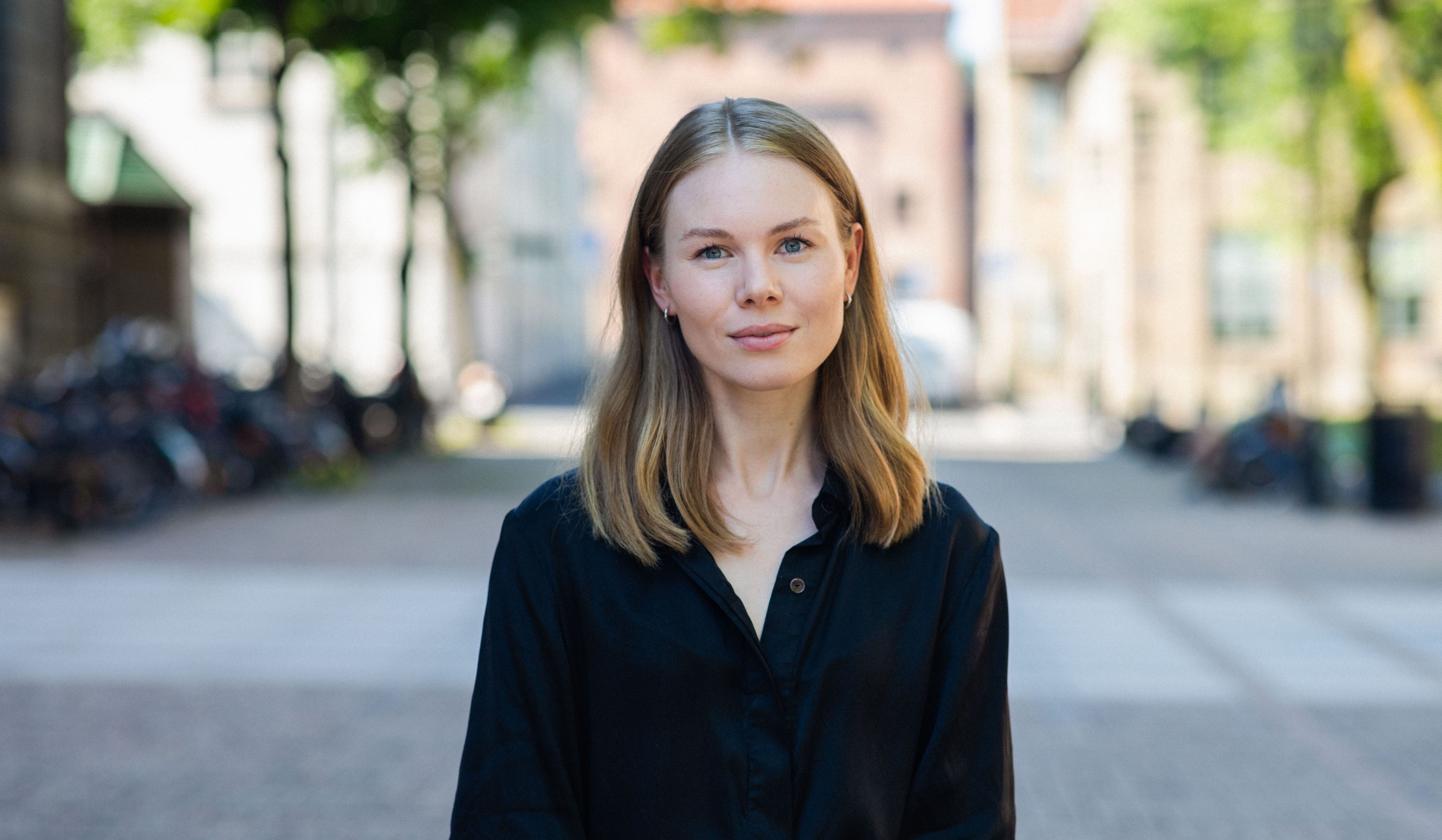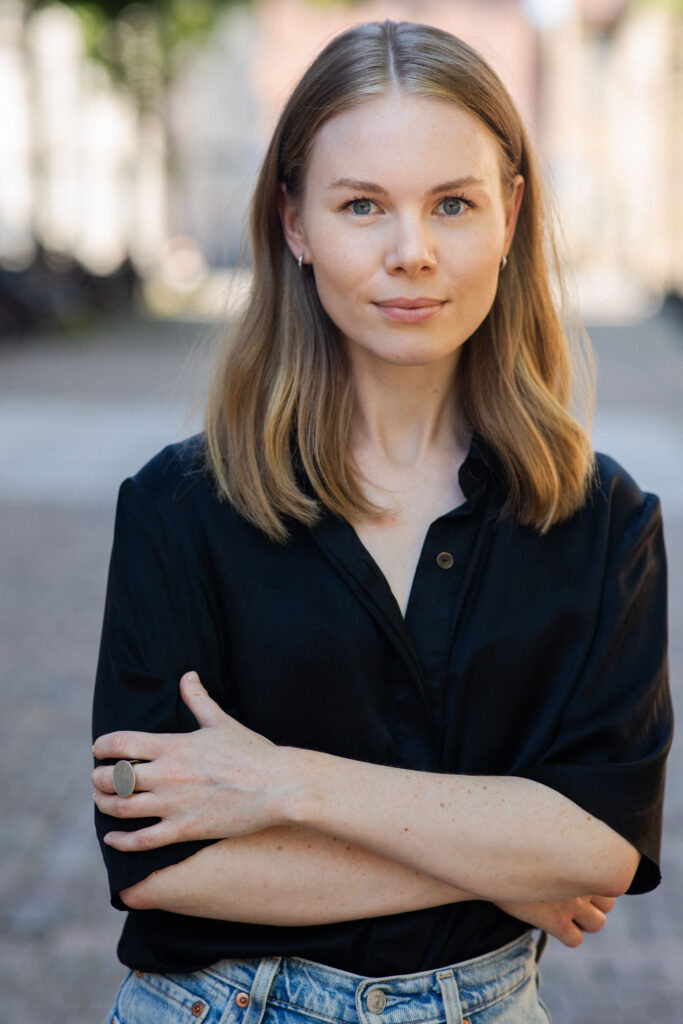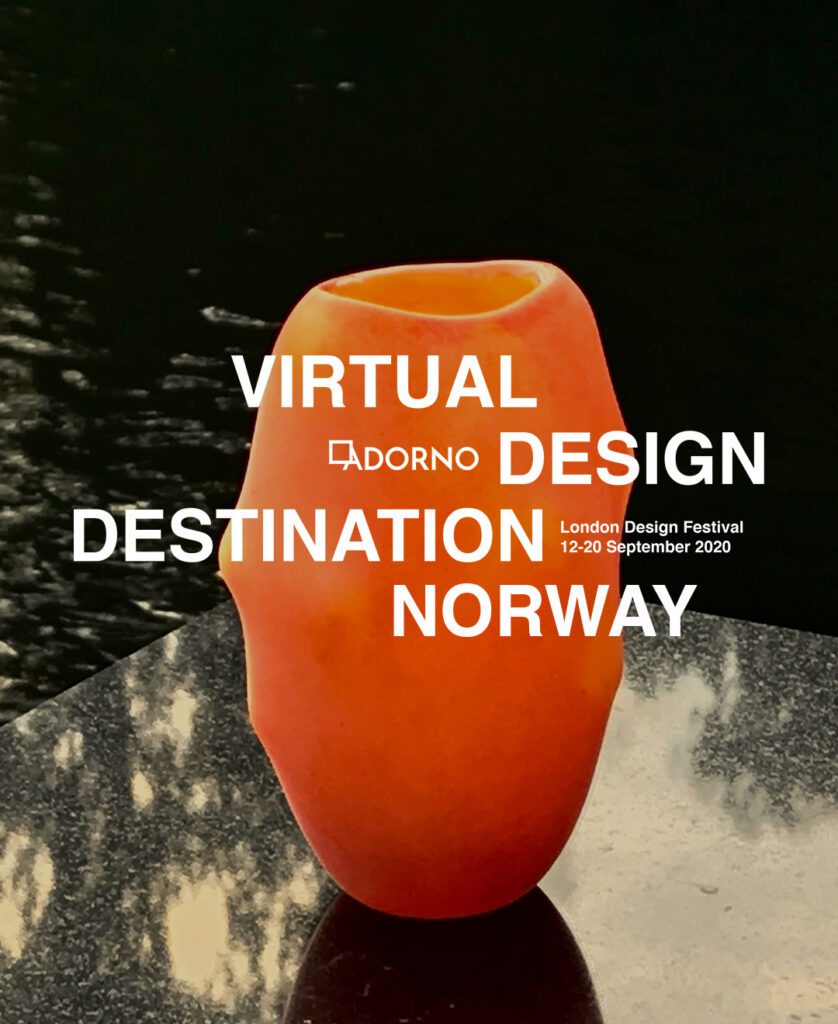With 29,000 attendees last year, 2020’s London Design Festival – coming in the middle of a global pandemic – was never going to be business as usual. But its founders are determined to “celebrate and promote London as the design capital of the world”. The show must go on.
Pivotal to this process is Virtual Design Destination, produced by the digital gallery Adorno, featuring 14 country-specific curations and more than 200 crafted objects. Adorno asked each curator to reflect on experiences, thoughts, and themes from lockdown, and explore how craft and design might offer solutions towards ‘A New Reality’. Norwegian Craft’s Tonje Kjellevold responded on behalf of Norway.
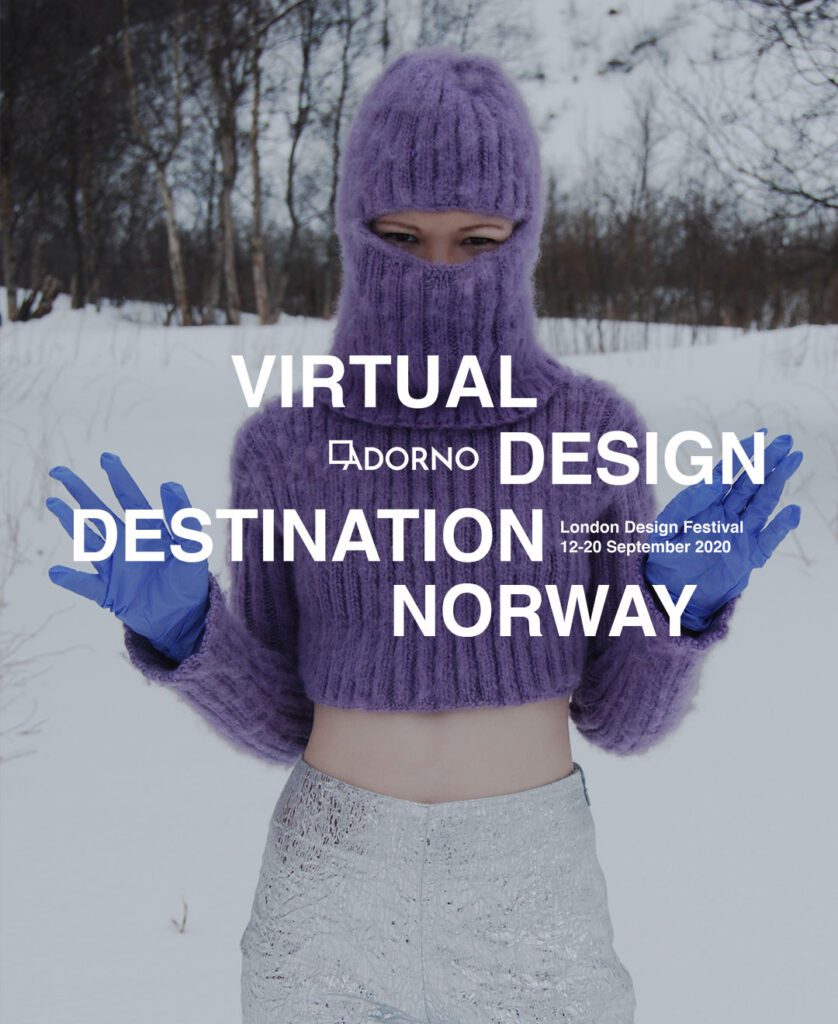
Knitted Top & Knitted Headpiece by Ramona Salo, featured in the Norwegian collection, Inside Looking Out (Photo: courtesy of Tonje Kjellevold)
Kjellevold’s Inside Looking Out is a digital rendering of artist Kiyoshi Yamamoto’s Bergen studio, featuring his work alongside that of Karen Klim, Sisse Lee, Ramona Salo and Nathalie Fuica Sanchez, as well as an ambient sound composition by Jens Peter Jongepier. It makes for a positive response. As the festival opened, Kjellevold explained how she began the project expecting to find restriction, isolation and solitude during lockdown, but instead discovered creativity, resilience and connection.
Tell me about your background – was your childhood creative, what drew you to curation?
I was mainly into reading and daydreaming – I’m very creative, as long as I can stay inside my own head. Trying to manifest creativity is an exercise in perpetual disappointment – honing a creative skillset and a unique expression of that is not something I can do, but I enjoy connecting the dots and putting things into systems. That sounds boring, but it’s a useful skill. I never thought about curation, until Adorno approached me – it was such an exciting opportunity that I had to say yes.
The brief for Virtual Design Destination was to reflect on the time of lockdown – what was your initial response and how does your final curation respond to it?
My initial response was bleak. Lockdown has been challenging for the creative community. But I couldn’t find inspiration in the negatives, so I started thinking about restriction and isolation as spaces where new opportunities could arise. What happens when we direct our focus inward, and how do these five artists navigate their practices with new obstacles in place. My final curation is open to interpretation, but I hope the setting gives the viewer a sense of where we are – in a ‘makerspace’.
What gave you the idea to set the virtual exhibition in Kiyoshi Yamamoto’s studio? What does this space represent?
I wanted to focus on the work being made in artists’ studios all over Norway, rather than on finished artworks. Kiyoshi’s studio is the archetypal makers’ space. It’s filled with ever-evolving projects and Kiyoshi is always playing music and lighting candles and explaining what he’s working on. I wanted to bring the other artists into a digital version of this space. There is a sense of ‘in medias res’ – of being plopped into the middle of this setting where incredible things are taking place – and yet the site is abandoned. Jens Peter Jongepier’s composition Dust Moving adds to the feeling of an almost sacred space.
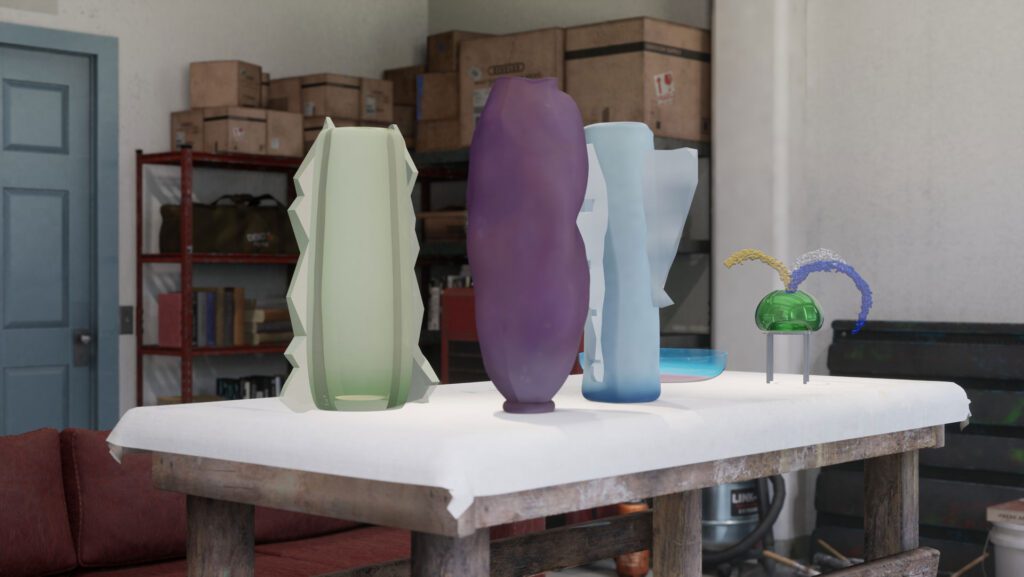
Works from “Inside Looking Out”, a Norwegian collection curated by Tonje Kjellevold for Virtual Design Destination presented by Adorno (Photo: Tonje Kjellevold)
This year’s global pandemic has presented a unique set of challenges for the festival’s curation – how did you overcome these?
This is my first curation, so I had the unique privilege of not knowing how things would normally work, but not seeing the works or the space in person was a challenge. Envisioning a 3D-simulation of a studio you have in your mind is also a peculiar type of exercise – but that’s where all my daydreaming experience came in handy. Adorno has an amazing technical team and they put together all the pieces – from modelling the studio to creating moveable models of all the artwork – just the way I envisioned them.
How did you select the five Norway-based artists and makers (Kiyoshi Yamamoto, Karen Klim, Sisse Lee, Ramona Salo and Nathalie Fuica Sanchez)?
Nathalie Fuica Sanchez’ work came first because it so clearly connected to restriction. Her textile work is based on weighted blankets – they speak of isolation in a very literal sense, but also convey this emotionally – plus you have a positive connotation of comfort, of sleeping soundly, of a safe space.
Kiyoshi Yamamoto and I picked out some of his pieces together. He has been revisiting and reconfiguring artworks during the pandemic, because of difficulty sourcing materials, but his glass works are perfect for that because they come in several pieces. I envisioned Karen Klim’s glass works, perfected through more than 30 years of practice, side by side with Kiyoshi’s, who has started working with glass only recently. They work so well together. Karen’s biggest inspiration is water, so it was nice to bring her into this space that overlooks the fjord.
Many of the other curationsare situated within nature, and I wanted my curation to have that connection as well, hence the title, Inside Looking Out. I knew placing Sisse Lee’s ceramic vessels by the window would entice people to ‘walk’ over, and I also imagined the water outside would create a wonderful (virtual) effect on the high gloss surface of the vessels. Finally, Ramona Salo’s clothing underlines this notion of ‘in medias res’. A pair of slippers on the floor, a warm sweater – I wanted it to look as if the artists had just popped out of the room.
How does their work reflect Norway – the landscape, the culture, the contemporary art/design scene? And in what ways are they themselves ‘inside looking out’ to international inspirations?
That’s an interesting and difficult question. Landscape is one of the aspects of this country that has been highlighted the most, in quite an aggressive way, when communicating Norway to the outside world. Of the artists in this collection Ramona Salo is probably the one who uses the landscape in the most direct way in her artistic practice. She draws inspiration from her upbringing in Sápmi – the ancestral land of the indigenous Sámi peoples that spans Northern Norway, Sweden, Finland and Russia. The artists in this collection all have connections to other countries, places and landscapes, but they have Norway in common. The Norwegian and international artist communities are in constant dialogue, but the pandemic is challenging that. How do we maintain connections and networks when we can’t see each other? We’re all inside looking out.
How have the artists and makers responded to the restrictions of lockdown and how does the work in this exhibition reflect this?
The uncertainty of the pandemic has made planning difficult. Artists keep having to stop and start projects, which is not only inefficient, but also demotivating. The situation has made Kiyoshi Yamamoto rethink his production volumes and the amount of art pieces and commissions he is working on. Karen Klim usually works with advanced sandblasted and cutting techniques, so she’s been working with smaller vessels that she can manage herself more easily. Some of these smaller pieces are in the exhibition – they have a softer, more organic look than her more complex works, but they are equally stunning. Artists are used to a complex set of challenges and working in solitude is the norm for many. In some cases, the pandemic has given them more time to experiment. A slower pace might be the new norm for everyone.
Several of the artists and makers reused or repurposed existing work. Might this be an enduring shift beyond the current pandemic?
It’s a natural consequence of material supplies being cut off and equipment being unavailable, that you work with what you have. There is also the financial risk of sourcing and buying new materials when you don’t know where your next job is coming from. That’s when you have to get really creative. I see this resourcefulness and conscientiousness in all five artists’ work, not only as a result of COVID-19, but as a result of having to manage within the artists’ economy. What is really going to allow artists to have sustainable artistic practices is a sustainable financial situation and the current situation has, sadly, not brought us any closer to that.
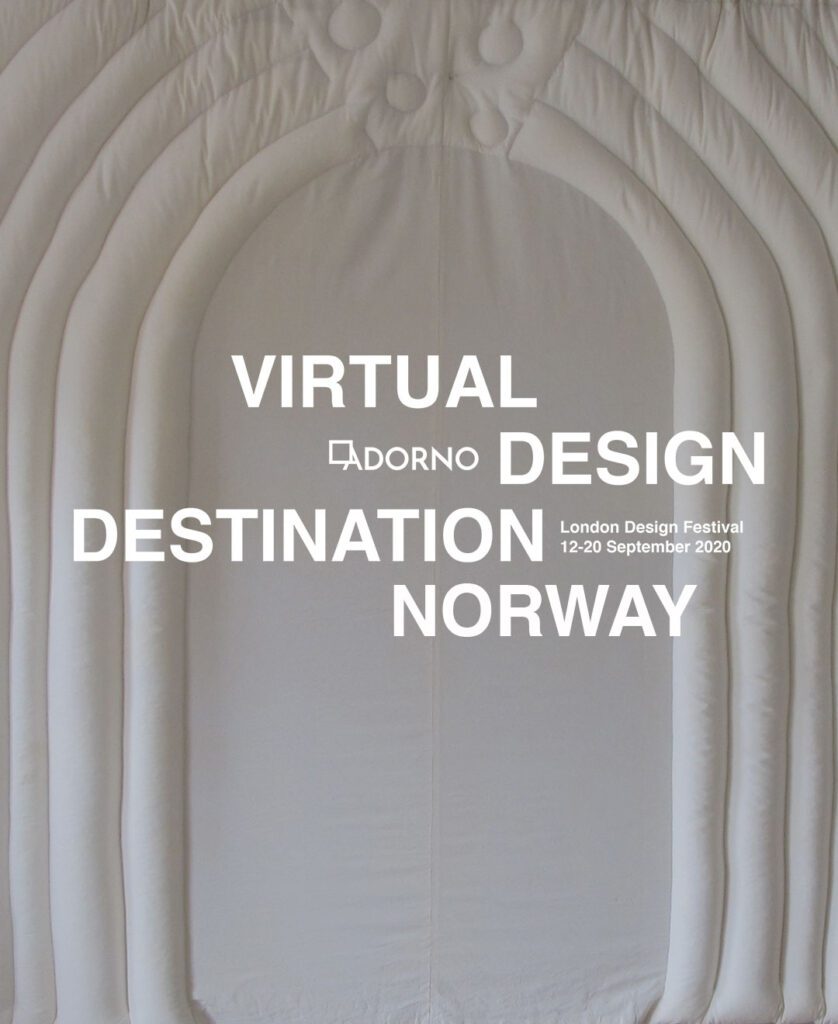
“A Blessing and a Curse” Wall Tapestry by Nathalie Fuica Sanchez, featured in the Norwegian collection Inside Looking Out (Photo: courtesy of Tonje Kjellevold)
What messages does the exhibition have for visitors to the London Design Festival?
I hope the exhibition conveys the magic of a ‘makerspace’, even in this virtual guise. So few people get to experience the inner workings of artistic creation, so I hope to shed some light on the amazing practices of Kiyoshi, Ramona, Sisse, Karen and Nathalie, and introduce a new audience to them. I also want to highlight that, despite everything being a little crazy and scary right now, wonderful things are still happening in enclosed and tucked away spaces. The contemporary crafts and design field (and indeed the whole visual arts field) is very resilient – and we should celebrate that.
London Design Festival – including the Adorno Virtual Design Destination – runs from 12 – 20 September 2020
More information on the artists, designers and makers mentioned in this article – along with many others – can be found at Norwegian Crafts
Wasted: When Trash Becomes Treasure by Katie Treggiden is published by Ludion on 8 October 2020
Top image: Tonje Kjellevold (Photo: Kaja Bruskeland)

